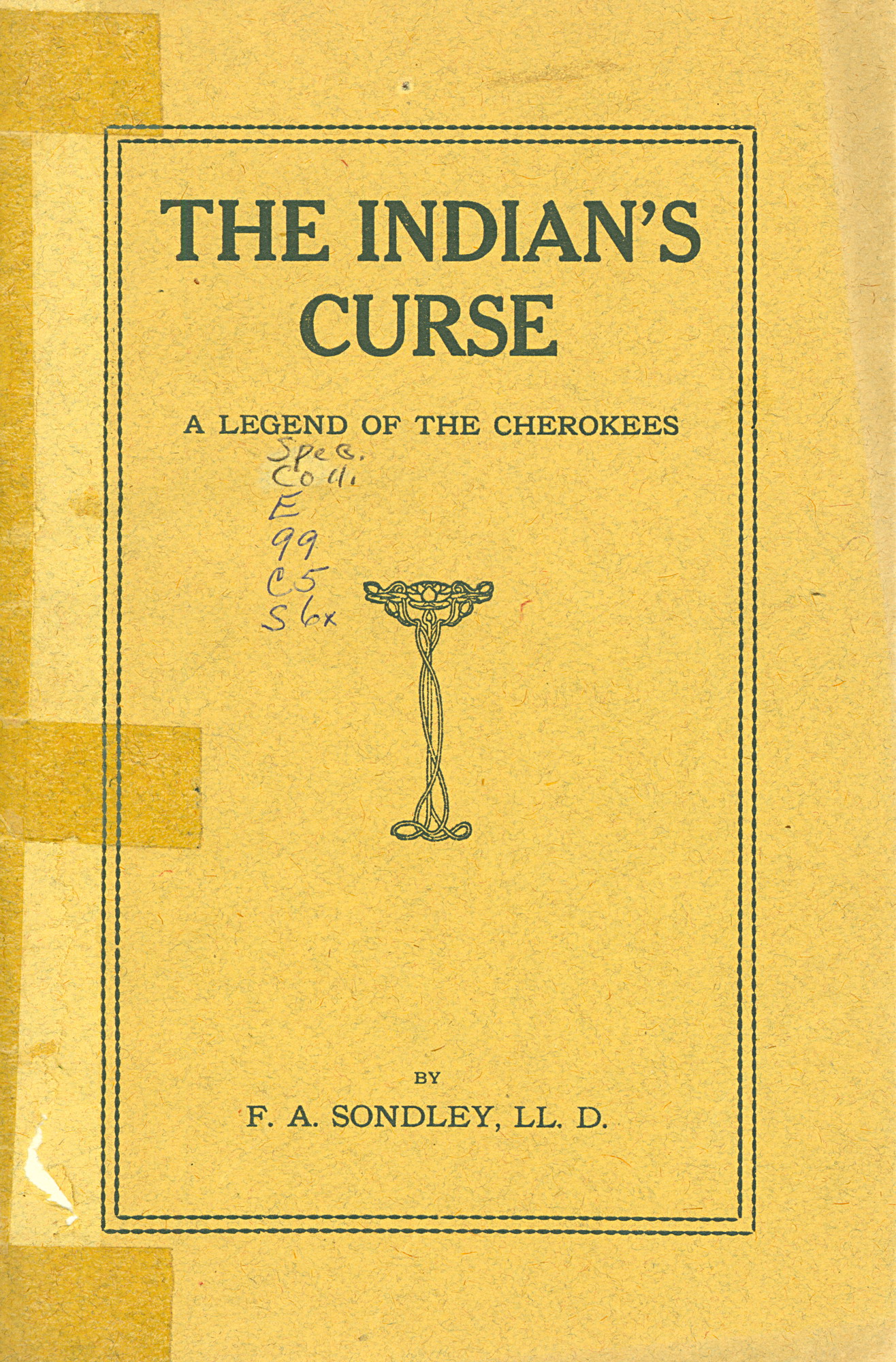|
Image No. |
Page No. |
Description |
Thumbnail |
|
ic000 |
Cover, front |
The Indian's Curse
A Legend of the Cherokees
By
F.A. Sondley, LL. D. |
 |
|
ic001 |
1 |
The Indian's Curse
A Legend of the Cherokees
By
F.A. Sondley, LL. D. |
 |
|
ic003 |
3 |
The Indian's Curse
A Legend of the Cherokees
An orphan's curse would drag to Hell
A spirit from on high;
But oh! more horrible than that
Is a curse in a dead man's eye!
-Ancient Mariner
For many years a fierce and bloody war was waged in
North America between the French and the English for possession of
the country watered by the eastern tributaries of the Mississippi
river. That dispute was ended at last in 1763 by the Treaty of
Paris. In this treaty the limits of English and the French
territories in that portion of the world were defined. Thus peace
was give to two continents
While that struggle, called in Europe the Seven Years' War and in
America the French and Indian War, was in progress, each side paid
assiduous court to the aboriginal tribes of the east. Rivalry for
the favor and alliance of the Cherokees was prosecuted by both with
extraordinary activity and persistence. Those Indians were not slow
to avail themselves of the advantages which such a condition
afforded. Their demands for gifts of supplies |
 |
|
ic004_005 |
4,5 |
and ammunition rapidly increased and were generally
acceded to with alacrity. In this way they were encouraged in
idleness and impudence. There was no abatement in the extravagance
of their claims when hostilities between the French and English
closed. They had been taught to overrate their importance, and the
lesson could not be recalled.
A sharp competition for trade in their peltries had sprung up
between the provinces of North Carolina, South Carolina and
Virginia, and especially between the two last named. This had
continued for a long time. The withdrawal of the French was the
signal for its renewal in greater vigor. Already the Cherokees had
reached a stage of corrupt worthlessness in which a friend of Indian
character had described them as "a nest of apostate hornets." The
eagerness of these provinces to secure their trade tended to
diminish the value of that trade while it increased the red man's
self esteem and viciousness. Often, it is true, he had grounds of
just complaint for wrongs received from his white neighbors. But
whether at any time his grievances were real or imaginary, he was
ever ready to go on the war-path. Upon any irritation these sons of
the forest would rush in squads on some unsuspecting settlement of
whites, slaughter every unprotected person whom they found there,
and return to their wigwams, with scalps of men, women and children
dangling from their belts, to enlist their friends in triumphant
orgies for unrestrained perfidy and barbarous deeds of cruelty and
blood.
By the end of the first half of the eighteenth century the Cherokees
had become accustomed to make these murderous descents from their
hiding places in the mountains upon the peaceful white settlers who
inhabited the lower country in North Carolina, South Carolina and
Virginia; and the lives of the residents of those colonies were in
constant peril.
Then too, the evils of existing circumstances were aggravated by the
quarrels which now began between the mother country and the
colonies. The War of the Revolution soon broke out and the English
set to work most earnestly to obtain, through the agency of John
Stuart and Alexander Cameron, the friendship and assistance of the
Cherokees. In this they were successful. Despite the outspoken
protests of Edmund Burke and other humane English statesmen, plans
were at once formed to incite the ferocity of these vindictive
hordes against those Americans who declined to continue subjects of
a half-German idiot.
The Cherokees, finding the States of North Carolina, South Carolina
and Virginia engaged in a war with a foreign power which required in
its conduct all their energies and resources, were easily aroused to
commit those atrocious excesses in which all uncivilized peoples
take such keen delight and which it seemed would now go unpunished.
So instigated, they perpetrated many outrages on the inhabitants of
the states just mentioned, and were particularly active during the
early part of the year 1776. |
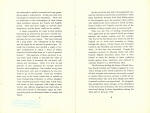 |
|
ic006_007 |
6,7 |
Finally those states determined to forego for a
while their old jealousies and rivalries and to unite in dealing the
desperate marauders a blow not soon to be forgotten. An agreement
was entered into by the terms of which a body of North Carolina
troops was to invade the Cherokee country and be there met by other
troops from South Carolina and still others from Virginia; and the
army thus formed was to make a combined attack upon Indian
settlements, killing their warriors, consuming their crops and
burning their houses.
General Griffith Rutherford was put in charge of the North Carolina
soldiers, while Colonel Williamson commanded those of South Carolina
and Colonel William Christian those of Virginia. Colonel Christian's
company was delayed and failed to join the expedition.
In September and October. 1776, General Rutherford, with twenty-four
hundred North Carolinians, crossed the Blue Ridge at Swannanoa Gap,
marched down the Swannanoa, and about two miles from its mouth, at a
shoal afterwards called in consequence the War Ford, passed the
French Broad. Thence he proceeded up Hominy Creek, and, fording Big
Pigeon and Tuckaseigee rivers, went forward over the mountain into
the valley of the Tennessee. Near where Franklin in Macon County
stands he dispersed a few Cherokees who offered resistance and
demolished three of their more important villages and cut down and
trampled in the earth large quantities of their standing corn,
turning into it cattle which his commissaries carried along for
beef. From the valley of the Tennessee he advanced across the
mountains to the hostile settlements on Valley river at and beyond
the present Andrews. There he tore down their dwellings and spoiled
their ungathered maize, as he had done in the Tennessee valley.
Returning to the latter, he found arrived there the South Carolina
forces under Colonel Williamson, who, after having, upon the way,
inflicted much damage on his adversaries, had fallen into an
ambuscade of Cherokees designed for General Rutherford near the
situation of the modern Franklin and saved himself from ruin only by
exceedingly hard fighting.
The conjoint armament then laid waste the abodes and plantations of
the Indians some distance further down on the Tennessee river and on
several of its tributary streams of North Carolina. Having in this
manner desolated thirty or forty towns of the Cherokees and wasted
an enormous amount of the ungathered products of their cultivated
lands and slain many of their braves and scattered their people,
General Rutherford recrossed the Blue Ridge with a total loss to
himself of only three or four men.
Soon after this, Colonel Christian at the head of a body of soldiers
from Virginia and the part of North Carolina which is now Tennessee
executed similar vengeance upon Cherokees living on territory
afterward included in the eastern part of the state of Tennessee;
just as in the earlier stages of |
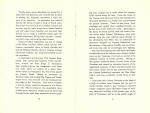 |
|
ic008_009 |
8,9 |
the undertaking a force of Georgians had punished
the Cherokees inhabiting the northern end of their state.
Throughout the following winter, the Cherokees suffered much from
famine caused by the destruction of their provisions. Never
afterwards were they able to raise an army of nearly such numerical
strength as those which they had been accustomed to lead to war. The
power of the great nation of the Cherokees had been broken forever.
Not until toward the close of the Revolutionary struggle did they
rally sufficiently to attempt as a tribe to go to the assistance of
their British friends. All aid then came too late. The effort was
feeble and a small force led by General Pickens quickly reduced them
to submission. Finally in 1785, at Hopewell in northern South
Carolina, the Treaty of Hopewell was concluded, whereby "the United
States grant peace to the Cherokees."
It would be difficult to overestimate the value to the American
cause of this expedition under General Rutherford. Had these Indians
not been subdued, they could have rendered to their British allies
such efficient and extensive aid as would have insured the
subjugation of the Southern States and effectually prevented the
important battles of Kings Mountain, Cowpens and Guilford Courthouse
and the driving of Cornwallis to retreat through North Carolina and
to surrender in Virginia. The strength of the Cherokees had before
been estimated at two thousand or twenty-five hundred fighting men.
With that number of mercenaries skilled in forest warfare added to
the detachments under Furgeson and Tarleton or stationed on the
frontier in rear of the Americans, the latter could never have
reached Kings Mountain, or would have been annihilated there, and
Tarleton would have found Cowpens an easy British victory, and
Morgan could never have reached Green, and Cornwallis would have had
no cause to go to Guilford Courthouse to assail Americans who, in
that event, would not have been there or elsewhere in arms. When
these things are remembered, it certainly is not too much to say
that without the Rutherford Expedition there could have been no
Yorktown surrender and no American independence. It should, too, be
ever borne in mind that the men who, under Rutherford, overcame the
Cherokees were from the same territory whose sons beat the British
at Kings Mountain and Cowpens.
There is a tradition connected with this military adventure across
the mountains which, viewed in the light of subsequent events,
possesses an uncommon interest and suggests the stories told of
second-sight in the Highlands of Scotland. It is attached to a
well-known fountain in Buncombe County, North Carolina, and has been
preserved in one of the old families of that country, as well as
among the aborigines who remain in the southwestern portion of the
state.
About six miles west of Asheville there is a sulphur spring; and not
far distant from it is a series of remarkable bends in Hominy Creek,
forming an |
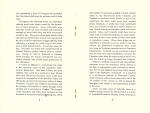 |
|
ic010_011 |
10,11 |
S, or double horse-shoe. This spring is now
neglected. But in the days which preceded the war for Southern
rights, it had one of the most famous hotels in the South. Known for
many years as "Deaver's Springs," it was visited every summer by
hundreds of Southerners who came in their carriages and spent the
greater part of the season there in the enjoyment of as pure and
healthy atmosphere and as picturesque scenery as could be found even
in that wonderful mountain district. With a profusion of
hospitality, an abundance of fresh country products, a salubrity of
climate and a beauty of surroundings surpassed nowhere, Deaver's
Spring's contributed as much as any other hosltery to spread the
fame of Western North Carolina as a favorite resort for recreation
and recuperation. The accommodations were commodious and comfortable
and the summer patronage was characterized by gaiety, elegance and
refinement.
The sulphur spring is near the western bank of Caney Branch, a small
stream which enters Hominy Creek about a mile below, receiving in
that interval the waters of several small streamlets. Near the
middle of the great bends or double horse-shoe of Hominy is the
mouth of Caney Branch and to the west of that is the smaller bend or
horse-shoe opening towards the north, while to the east is the
larger bend or horse-shoe opening toward the south.
The tradition above referred to says that General Rutherford, on his
way to chastise the Cherokees, after crossing the French Broad
river, encamped with his followers, for a week, in the peninsular
formed by the smaller or western horse-shoe of Hominy Creek; and
that while he remained there, some of his men, ignorant that any
human being not belonging to the enterprise was nigh, poisoned one
of the rivulets affluent to Caney Branch with the purpose of killing
some of the numerous wolves that at night prowled around the camp
and carried off all edibles left exposed. If the whites supposed
that the enemy were not aware of their approach, they were mistaken.
The Indians had been apprised of General Rutherford's campaign and
its objects before he passed Swannanoa Gap and had stationed
sentries to observe his progress and keep them informed of his
movements at every step. Three young warriors were lurking in the
proximity of this encampment in order to watch the incursion and
communicate promptly to their fellows at home whatever they might
discover. Such communication was effected by signal smokes. A column
of smoke from a selected peak near the sulphur spring could be seen
by another party of watchers near the head of Hominy and the latter
could correspond in the same way with a third party on a mountain
miles beyond, and so until the news had reached the Cherokee
headquarters. Of the three youths who composed the outlook near the
sulphur spring, the names of all have been forgotten except that of
Chee-squi-ah. One of the others was an uncle of the mother of
Yo-na-gus-ka, afterwards noted as the greatest chieftain of the
Cherokees since Oconostota and Atacullaculla. |
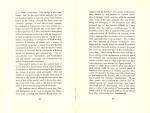 |
|
ic012_013 |
12,13 |
This youthful patriot, the grand-uncle of
Yo-na-gus-ka, while secretly inspecting Rutherford's camp, chanced
to drink of the infected stream. Perceiving that he was poisoned and
could not survive and grieved at a death he seemed ignoble and
indignant at an act he regarded as cowardly and inexpressibly base,
he told his two companions what had befallen him and denounced the
treachery of which he thought himself the victim. They bore him to a
thicket at hand and there hid him and themselves until his doom had
been determined. At that place he soon expired. They buried him, in
a sitting posture, on the northwestern side of a white oak hard by
the place of their concealment. That white oak is yet standing and
has been known for many years as the Township Tree, because it was
in the line which divided two townships of the county, The grave,
too, is quite plainly to be seen. Once the mound was three or more
feet high, but it has been reduced by the rains as freezes until now
it is only a foot in elevation above the surrounding earth.
For more than one hundred years this tree and the grave beside it
have been familiarly associated throughout the country around with
the fate of the unhappy Cherokee. Children there are old in jest
that if they will go to the tree and knock on it three times with
the naked fist and, after a short pause, ask in a low voice,
"Indian, what did you die for?" the answer will be nothing at all.
The children understand by this, not that they will get no answer at
all, but that, by way of answer, they will hear a voice from the
dead replying in the words, "Nothing at all." When, after the
experiment, the complain of the want of a response, the jester
laughingly says, "I told you that the answer would be nothing at
all." Sometimes older children who have learned the trick hide
behind the tree when an inquiry is about t the propounded and answer
in the words which the inquirer had been warned to expect, generally
to his great terror.
But the strange part of the story remains to be told.
When the young Indian was dying, he called on the god whom he
worshipped and solemnly invoked a curse on those who had poisoned
the water, as well as on the vicinity where he was about to perish
and on all who should become in any way associated with it. The
curse seems to have been in a great measure realized. For about half
of the time which has elapsed since its occupation by the whites
began, the property so cursed has been in litigation. Some of the
suits have been between members of the same family and many of them
protracted, expensive and very bitter. Those who have claimed the
spring or been connected with it, have, more than a few of them,
been subjects of serious misfortunes. Financial ruins, law suits,
domestic infelicities, separations, divorces, brawls, violent
deaths, fires, insanities, suicides, shipwrecks, family quarrels and
other distressing afflictions have been of so frequent occurrence
among them that almost |
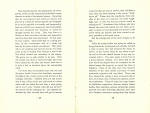 |
|
ic014_015 |
14,15 |
no one has escaped the vengeance which apparently
impended over all concerned in the location. One owner alone, in
addition to numerous other dire calamities, had eighteen houses
burned on it while it belonged to him.
Such a record of disasters as is here exhibited probably exists in
relation to no other spot on the American continent. Such a
combination and continuation of mishaps, coupled with the Indian's
anathema, display a preeminence of inexplicable coincidences. To the
superstitious it exceeds mere coincidence and becomes a case of
fearful retributions.
This curse surpasses, in the malignity of its imprecation and the
magnitude of its fulfillment, all the celebrated curses of
literature. The elaborate curse in Tristam Shandy was only by way of
preparation for sudden emergencies. The curse of O'Kelly was vicious
but harmless. That of the Cardinal Lord Archbishop of Rheims, of
which it is said, "Never was hared such a terrible curse," was
expressly removed when it was perceived that its effect was
restricted to an insignificant jackdaw. The curse of the Welsh bard,
"Weave the warp and weave the woof,
The winding sheet of Edward's race,"
scarcely had a consummation commensurate with its malevolence. But
the curse of the young Indian scout, pronounced without candle,
bell, or book, was fierce in its denunciation and terrific in its
accomplishment.
The gentleman who has preserved this tradition is himself a member
of the family that owned the place longer than any other and
suffered most of them all. He heard the story often in childhood
from members of that family and from its neighbors, and, when quite
small, tried the spell of knocking on the old white oak and, at the
grave, demanding of the dead the gratification of his childish
curiosity. All of this preceded many of the grave and singular
sufferings which have come to those who owned or controlled the
site. The peculiar afflictions of such persons have long been
observed and a frequent subject of comment in the vicinity as an
unparalleled verification of a remarkable malediction.
After this gentleman reached manhood, he was engaged, for some time
in the year 1881, in business in Graham County, North Carolina. A
number of Cherokees resided in that county, then, as they do yet.
Among them was a well-known Indian whose appearance indicated
unmistakably that his life had been extended far beyond that of any
other person whom the visitor had ever seen. The body of the old man
was nearly destitute of flesh, his skin hung, like parchment, in
loose folds from his emaciated form, his eyes were sunken, and his
entire person plainly denoted a being of extraordinary longevity.
Other old natives, and particularly a man of patriarchal years named
Tah-quit-tee, averred that this relic of by-gone days had passed
middle life when they were yet small boys. The stranger came to |
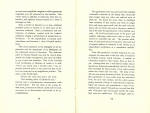 |
|
ic016 |
16 |
know intimately this man of many years and often
conversed with him in regard to past events. The aged Cherokee spoke
freely of his early life. He narrated the details of the poisoning,
death, burial and fateful curse of the expiring sentinel, at Sulphur
Springs in 1776, the march of Rutherford's host against his nation,
the points where it crossed the rivers and mountains, and the
terrible devastation which it was wrought among his race as the
black cloud of war burst, in desolating fury, over the home of his
fathers. For he had been one of those sent out to keep watch on the
advance of the whites, and had witnessed it all. The old man was
Chee-squi-ah.
Fact is sometimes stranger than fiction, and "There are
more things in heaven and earth, Horatio, Than are dreamt of in your
philosophy."
It may be that the curse of the dying boy is spent, and the Sulphur
Springs may yet regain the festive glory of departed years; but
round the spot will linger the memory of the youthful Cherokee and
of that dread invasion which crushed a people famed for many acts of
savage chivalry, and terminated for all time to come the prowess of
an ancient nationality. |
 |


